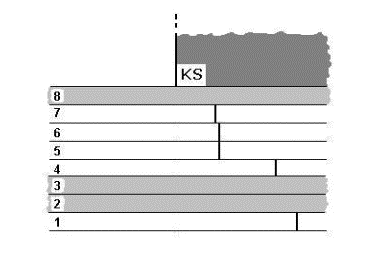Ormen Friske's catastrophe clarified after 54 years: improper keel design and construction was a death sentence even under moderate seas
A technical investigation by Martin Braun
April 2004
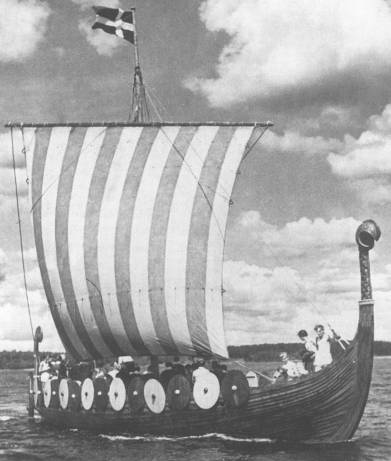
The Swedish Viking ship Ormen Friske, a replica of the famous Gokstad ship from the 9th century, was underway on June 22 1950 from the Elbe estuary in Germany to Rotterdam in the Netherlands, when it was caught in a storm on the North Sea and broke apart. All 15 crew members lost their lives.
See also: ship and crew two days before the disaster when passing through the Kiel canal: Dok 1 and Dok 2.
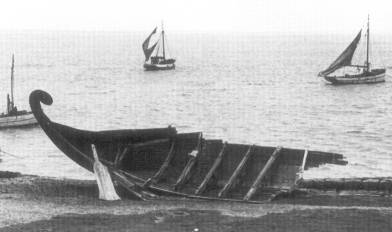
to the descendents of the builders and the victims, both of whom have a right to know
and
to all present and future Viking sailors
The Ormen Friske disaster has been considered unexplained until today. Her loss first became known, when the two main wreckage pieces were found near the North Frisian Isles, the stern section off Pellworm (photo above on the right) and the foreward section between Amrum and Sylt.
Three possible causes of the accident have been discussed:
1) breaking apart in moderately rough sea because of construction errors;
2) being run over by a large vessel in darkness;
3) being destroyed by the reefs or breakers off the German North Sea island
of Helgoland, when aerial bombing maneuvers prevented refuge in the isle's
port.
Concerning hypothesis (2) there was no evidence on the wreckage pieces, such as paint remnants or twisted timber at the break points. Hypothesis (3) is solely based on a fisherman's testimony, which appears unreliable for a number of reasons and which must be rejected simply on the grounds of technical evidence. Hypothesis (1) was widely discussed in the press directly after the accident; however, it has remained an open one, because the Swedish authorities declined to investigate the accident.
Newly available photos, which had been taken of the wreckage pieces just a few days after the accident, prove that hypothesis (1) had been the correct one. They show at which points the ship broke apart, and they also show the directions of the breaking forces that were at work. They further demonstrate that the cause was an extremely weak point in the keel, which was situated at a particularly sensitive place: the sternward edge of the keelson (mast foundation). This artificial break point was evidently built in by unprofessional craftsmanship during the boat's construction.
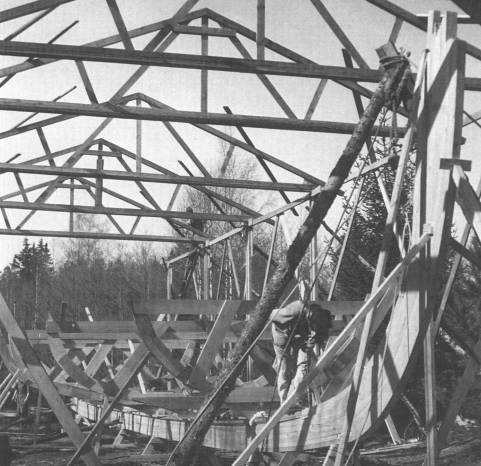

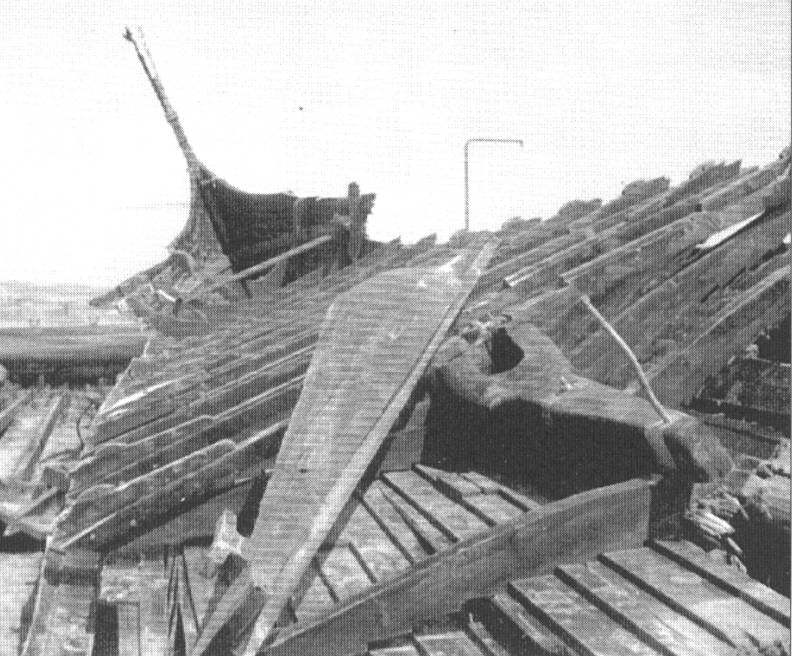
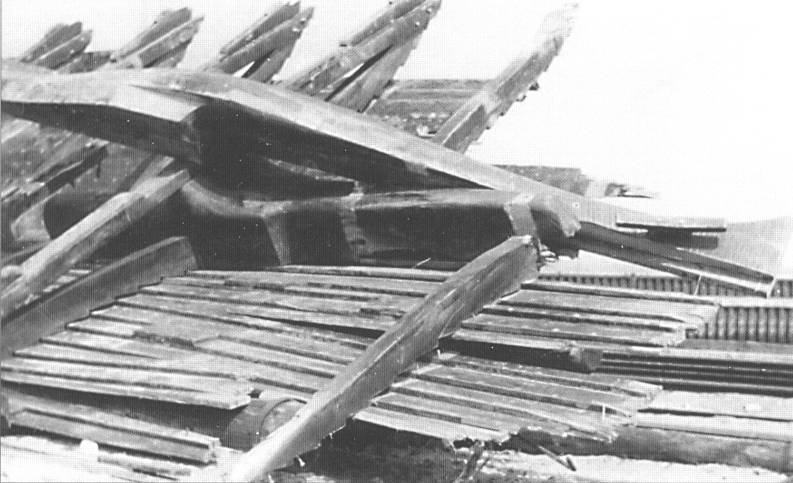
a) bottom boards outer starboard side: break edge at rib #1 astern of mast hole,
b) bottom boards, inner starboard side: break edge at (missing) rib #2 astern of mast hole,
c) bottom boards, port side: break edge at (missing) rib #3 astern of mast hole,
d) keel: break edge at after end of keelson.
Because all bottom boards broke evenly at the aft edge of the ribs, there appears to have been a bending motion of the hull around these ribs. Such movements occur routinely, when the ship has turned away from the wind (as with a sea anchor) and the sea lifts bow and stern in sequence.
One can conclude that the keel broke first, because of its localized weakness at this point (see discussion below). After that, the ship no longer had a "back bone" in the region of ribs #1 to #3 (astern of mast hole). Subsequent lifting motions by the sea were thus bound to break the bottom boards at these ribs.
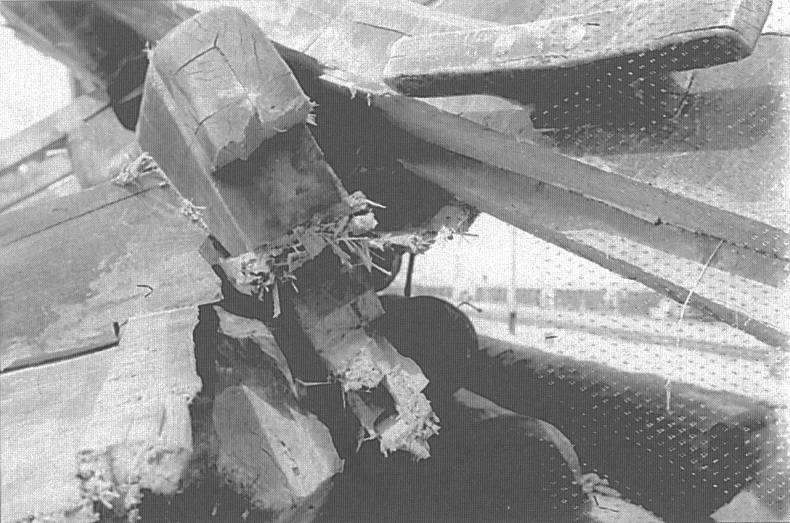
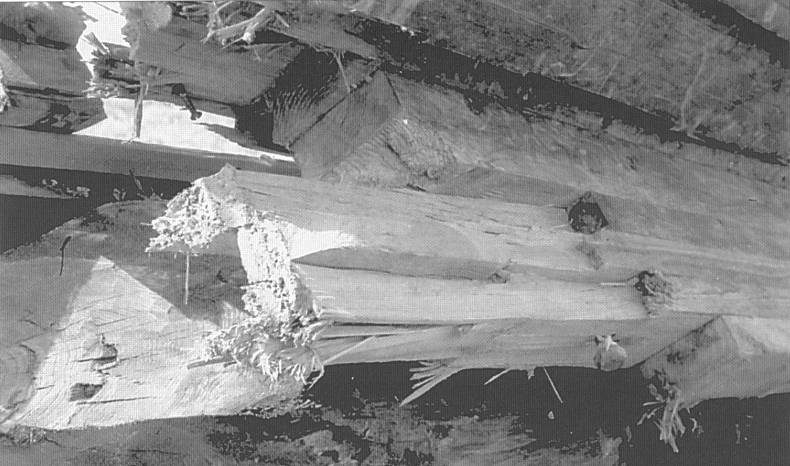
Planks #2, #3 and #4 have not only broken at this same point but also have split lengthwise foreward, causing plank #4 to partly separate from its abutting neighbor. Significantly, planks #1, #4, #5, #6, and #7 have joints at nearly the same point on the keel's length. This means that structurally only three planks, #2, #3, and #8, held together the keel at this point.
The immediate vicinity of these joints below the after end of the keelson (see previous photo) determines that the keel assembly would be particularly stressed here by the mast:
a) by the mast's vertical force upon the keelson and keel through the weight of the mast and the tension of the rigging, and
b) by bending motions of the keel and the hull around the keelson's after edge due to the mast's forward pull on the stern rigging, as long as the ship was under sail.
The inevitable consequence of these conditions was that the keel was doomed to rip apart even in moderate waves, perhaps when they reached a height of 2 meters. The photo indeed shows no signs of a fracture by impact or twisting forces, as might have occurred in case of a collision or ground contact. Instead these photos reveal a clean pulling apart, caused by tension in the direction of the keel's length, which occurs with every wave, and which is illustrated in the following moveable pictures.
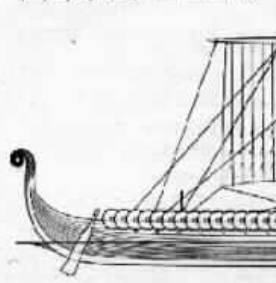
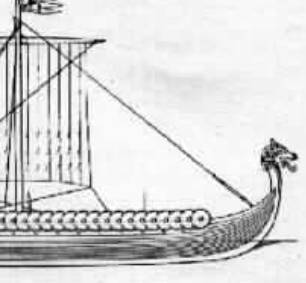
Drag mouse
under
the bow
